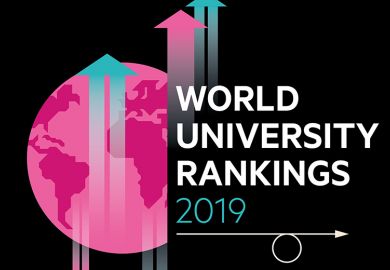Browse the full results of the World University Rankings 2019
We have come a long way. This is the 15th edition of the Times Higher Education World University Rankings – an appropriate moment to reflect on the amazing evolution of our data and analyses since our first tentative publication in 2004.
Today’s rankings, our 2019 edition, are very different from those we produced all those years ago – in depth, in breadth and in function.
The 2004 ranking was based on just six simple and relatively crude metrics. Today’s is based on 13 carefully calibrated, comprehensive performance indicators, encompassing the full range of a world-class research university’s core missions: teaching, research, knowledge transfer and international outlook.
The 2004 ranking included a survey of just a few thousand academics. This year’s includes the informed views of more than 20,000 scholars – all published experts and all carefully selected to be statistically representative of their country.
The 2004 ranking included 200 universities. Today’s analysis takes in more than 1,200 institutions – the top 1,000 ranked and analysed in our print supplement, with the full list of 1,258 included and profiled online.
The 2004 ranking covered 29 regions, while this edition covers an unprecedented 86 territories.
The 2004 ranking was based on a few thousand datapoints, all sourced from third parties. Today’s research is built on THE ’s own database of many millions of datapoints that detail student and staff demographics, reputation and finances, all broken down into 11 broad subject areas and stretching over multiple years.
This last point underpins the most profound change over the past decade and a half – the fundamental transformation of a modest list into a sophisticated, multifaceted and far-reaching enterprise.
Download a copy of the World University Rankings 2019 digital supplement
As a resolutely global business, THE today provides sophisticated data-driven insights and analyses to students and their families, to academics, university leaders, industry and investors, and to politicians and governments, right across the world.
The original idea for the rankings came from a December 2003 report for the UK government: the Lambert Review of Business-University Collaboration . In it, Richard Lambert, a former director of the UK employers’ group the CBI, lamented that UK universities were “still much too inclined to benchmark themselves against each other, failing to recognise that in a global marketplace what counts is how they stand up against the best in the world”.
A global ranking, he continued, “would provide the Government with a way of assessing its research funding efforts. It would provide academics with a valuable reality check, and help vice-chancellors in their efforts to win the support of their colleagues and the Government for their strategic plans.”
Not only did THE rise to that challenge, we delivered beyond those initial expectations – creating rigorous and trusted global strategic benchmarking data and analyses not just in the interests of the UK, as Lambert envisaged, but for the whole world.
In the process, we have become a central part of a profoundly exciting movement in global higher education and research: internationalisation.
As The Economist noted on 19 May 2018, global university rankings have “fostered the growth of a community that knows no borders…the world benefits from this productive, international body of scholars”.
We very much look forward to supporting this community, and all of those with a stake in the success of the world’s great research universities, over the next 15 years and beyond.
Phil Baty is editorial director, global rankings, at Times Higher Education.
Countries/regions represented in the top 200
|
Country/region |
Number of institutions in top 200 |
Top institution |
Rank |
|
United States |
60 |
3 |
|
|
United Kingdom |
29 |
1 |
|
|
Germany |
23 |
=32 |
|
|
Netherlands |
12 |
58 |
|
|
Australia |
9 |
=32 |
|
|
Canada |
9 |
21 |
|
|
China |
7 |
22 |
|
|
Switzerland |
7 |
11 |
|
|
Hong Kong |
5 |
36 |
|
|
South Korea |
5 |
63 |
|
|
Sweden |
5 |
40 |
|
|
Denmark |
4 |
=116 |
|
|
France |
4 |
41 |
|
|
Belgium |
3 |
48 |
|
|
Italy |
3 |
Scuola Superiore Sant’Anna |
=153 |
|
Finland |
2 |
=99 |
|
|
Japan |
2 |
42 |
|
|
Norway |
2 |
=121 |
|
|
Singapore |
2 |
23 |
|
|
Spain |
2 |
=135 |
|
|
Austria |
1 |
=143 |
|
|
Republic of Ireland |
1 |
120 |
|
|
Russian Federation |
1 |
=199 |
|
|
South Africa |
1 |
=156 |
|
|
Taiwan |
1 |
National Taiwan University |
170 |
Register to continue
Why register?
- Registration is free and only takes a moment
- Once registered, you can read 3 articles a month
- Sign up for our newsletter
Subscribe
Or subscribe for unlimited access to:
- Unlimited access to news, views, insights & reviews
- Digital editions
- Digital access to THE’s university and college rankings analysis
Already registered or a current subscriber? Login








